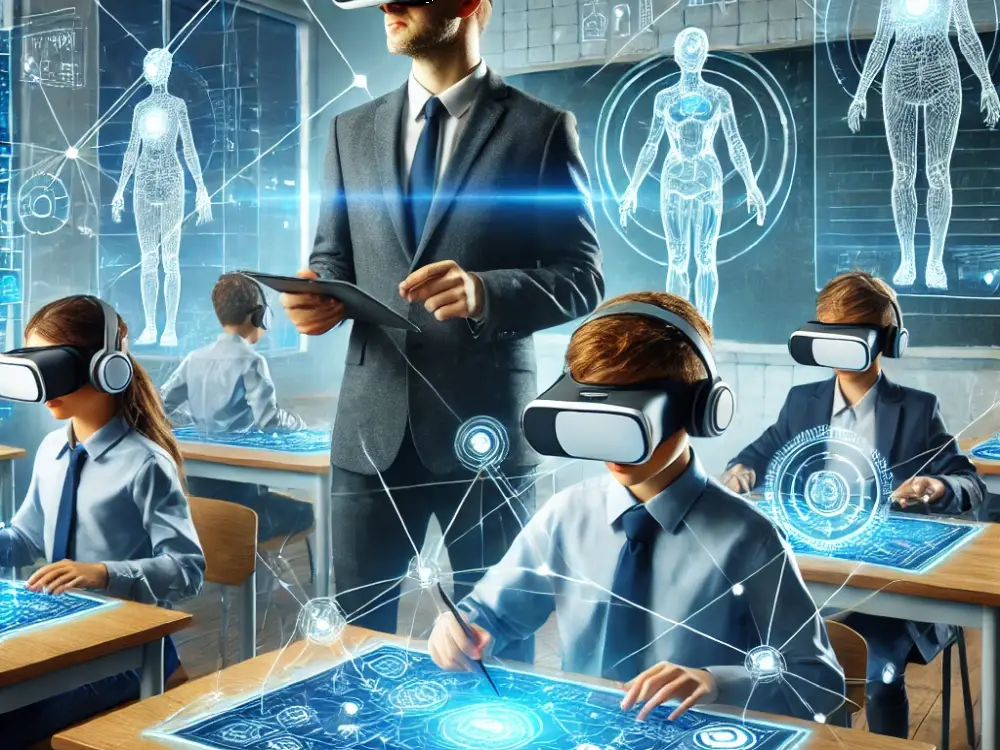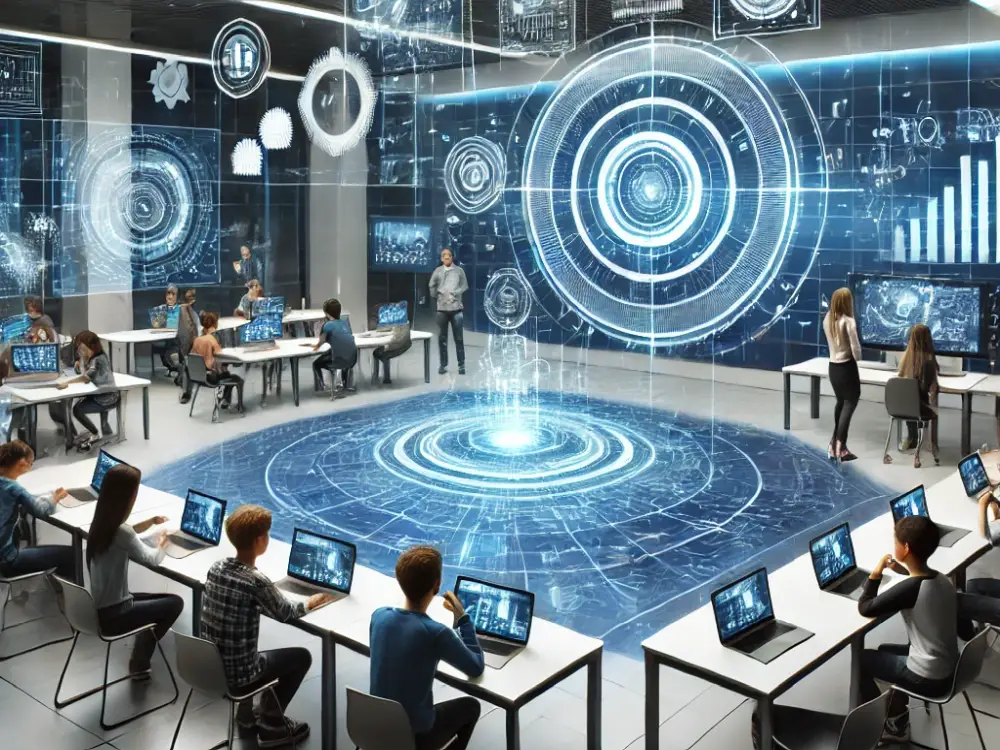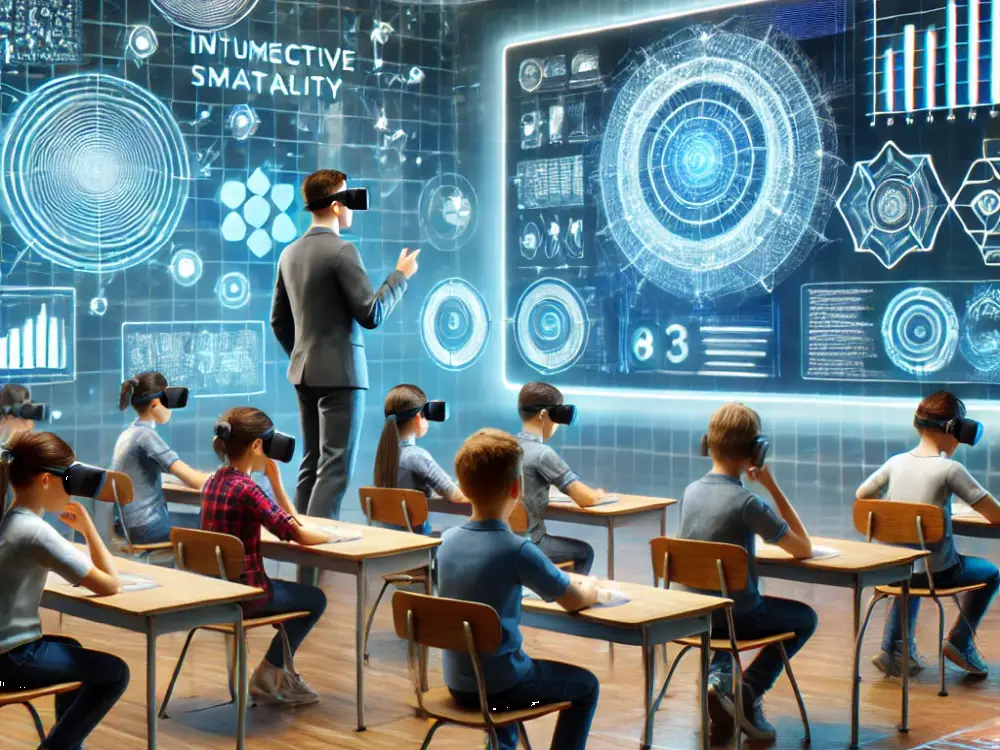Revolutionizing Classrooms with Advanced Educational Technology
Education has evolved significantly over the last few decades, transitioning from traditional tools like chalkboards and textbooks to today’s interactive digital platforms. As we venture further into the digital age, advanced educational technology (EdTech) has become a fundamental aspect of modern classrooms. From personalized learning systems to virtual reality field trips, EdTech is not only transforming how students engage with learning materials but also how educators manage classrooms. In this article, we explore how advanced educational technology is revolutionizing classrooms and what the future holds.

1. Personalized Learning Through Adaptive Technologies
One of the biggest challenges in education has always been catering to the unique needs of every student. Educational technology helps bridge this gap by offering personalized learning solutions. Adaptive learning platforms leverage artificial intelligence (AI) to tailor educational content based on individual student performance. For instance, platforms like Khan Academy use algorithms to recommend exercises that challenge students at the right difficulty level, ensuring they are neither overwhelmed nor under-stimulated.
Smartboards, tablets, and interactive learning tools allow educators to diversify lesson formats, incorporating quizzes, videos, and interactive simulations that cater to different learning styles. Students can take more control of their learning, exploring subjects at their own pace. This customized approach is beneficial for inclusive education, where students may have different abilities or specific learning needs.
Moreover, educators can monitor student performance in real-time, using data to track progress and provide targeted support to those who need it. This level of personalization has made education more efficient and engaging, reducing disparities in learning outcomes.
2. Enhancing Student Engagement and Collaboration
Educational technology transforms passive learning environments into active, engaging ones. Augmented reality (AR), virtual reality (VR), and interactive whiteboards turn standard lessons into interactive experiences that foster collaboration and engagement. For instance, students can embark on virtual field trips to historical landmarks, explore the inner workings of the human body, or even simulate scientific experiments in a controlled virtual environment.
These interactive experiences not only make learning more engaging but also encourage collaboration among students. Tools like Google Classroom and Microsoft Teams offer collaborative platforms where students can work on group projects, share ideas, and receive feedback from peers in real-time. These collaborative tools are also essential in hybrid and remote learning models, ensuring that students can remain engaged and connected to their classmates, regardless of physical distance.
The impact of collaboration in learning extends beyond the classroom. By fostering teamwork, critical thinking, and communication skills through these digital platforms, students are better prepared for future workplaces where these skills are in high demand.

3. Adapting to Hybrid and Remote Learning Models
The COVID-19 pandemic highlighted the importance of remote learning solutions, and educational technology was at the forefront of keeping students connected. With many schools adopting hybrid learning models, educational technology has become an essential tool for ensuring students continue to receive quality education, regardless of where they are.
Platforms like Zoom, Google Meet, and other video conferencing tools allowed students to participate in virtual classrooms. Learning Management Systems (LMS) like Moodle, Blackboard, and Canvas ensured students could access their assignments, submit work, and communicate with teachers in real-time. These platforms also facilitated parental involvement in their children’s education, allowing them to stay updated on assignments, progress, and teacher feedback.
As we move forward, the integration of AI into these platforms will further streamline remote learning. AI will likely help monitor student engagement, providing real-time adjustments in lesson delivery and content. Moreover, AI-driven chatbots could offer immediate assistance to students, answering questions or guiding them through complex topics.
4. Preparing Students for a Tech-Driven Future
The primary goal of education is to prepare students for the future, and as we move further into the Fourth Industrial Revolution, a deep understanding of technology is no longer optional—it’s essential. Educational technology provides students with hands-on experience in fields like coding, data analysis, robotics, and AI. These subjects, once considered niche or specialized, are becoming mainstream in many schools worldwide.
Students engaged in STEM (Science, Technology, Engineering, and Mathematics) programs benefit from the use of educational technology, allowing them to solve real-world problems and develop technical skills that will be vital in the coming years. Coding platforms like Scratch and Tynker introduce students to programming in a fun and accessible way, while more advanced tools like Python and Arduino kits help students understand robotics and automation.
As industries across the globe increasingly rely on technology, the students who are adept at using these digital tools will have a competitive advantage in the workforce. The shift towards EdTech is a reflection of the need to future-proof the next generation.

5. The Role of AI in Education
Artificial intelligence has already begun to make its mark on education, and its potential is enormous. From automating administrative tasks to providing personalized learning experiences, AI has the potential to revolutionize education. AI-powered platforms can analyze large amounts of student data to identify learning gaps, provide real-time feedback, and predict outcomes. AI-driven tools can even help teachers by automating tasks like grading and attendance tracking, freeing them to focus more on teaching.
Virtual tutors, powered by AI, are also becoming more common. These tutors can assist students outside of the classroom by answering questions and guiding them through assignments. The future of AI in education is exciting, as it promises to offer even more personalized, efficient, and accessible learning experiences for students.
Conclusion
Advanced educational technology is not just a trend—it’s the future of education. From personalized learning systems and immersive AR/VR experiences to AI-powered platforms, EdTech is fundamentally transforming how students learn and how teachers teach. As we look ahead, embracing these technologies will be crucial in ensuring students are prepared for the challenges of a rapidly changing world.
According to
EdTech Magazine, educational technology has rapidly evolved, providing tools that enhance student engagement and learning outcomes.
To learn more about how educational technology can revolutionize learning, visit
Israk’s Educational Technology Solutions.









